Would you be interested to make a post about a cycling trip around Kabardino-Balkaria (along the Elbrus) by a group of non-professional cyclists? That’s what the email said from Aleksey Grebenschikov. It sounded like a brilliant trip, so of course we said yes.
Our train arrived into Kislovodsk city at 8:12 am. We disembarked and started preparing our bikes for the trip. Our first task was to fill up our bottles with “Narzan '' (which is a local mineral sparkling water) and then we set off, cycling to Bermamiyt. On this day we rode our bikes around 40 kms uphill.
For the first 15 kms of our route, we rode on an asphalt surface but then it switched to a gravel road. Since it was our first day, it was physically very hard to adapt. The closer we got to the finish line, the steeper the gradient became and the more rocks there were on the road. Also, it started raining. At some point we met a tourist and he told us that he had been on a “hunt” for three days to see Mt Elbrus but he didn’t manage to see it because of fog. So obviously, by the end of the 1st day we were not able to see Elbrus. Fog was everywhere, but based on the weather forecast information we knew that the next day there was a chance to see it because it was supposed to be sunny.
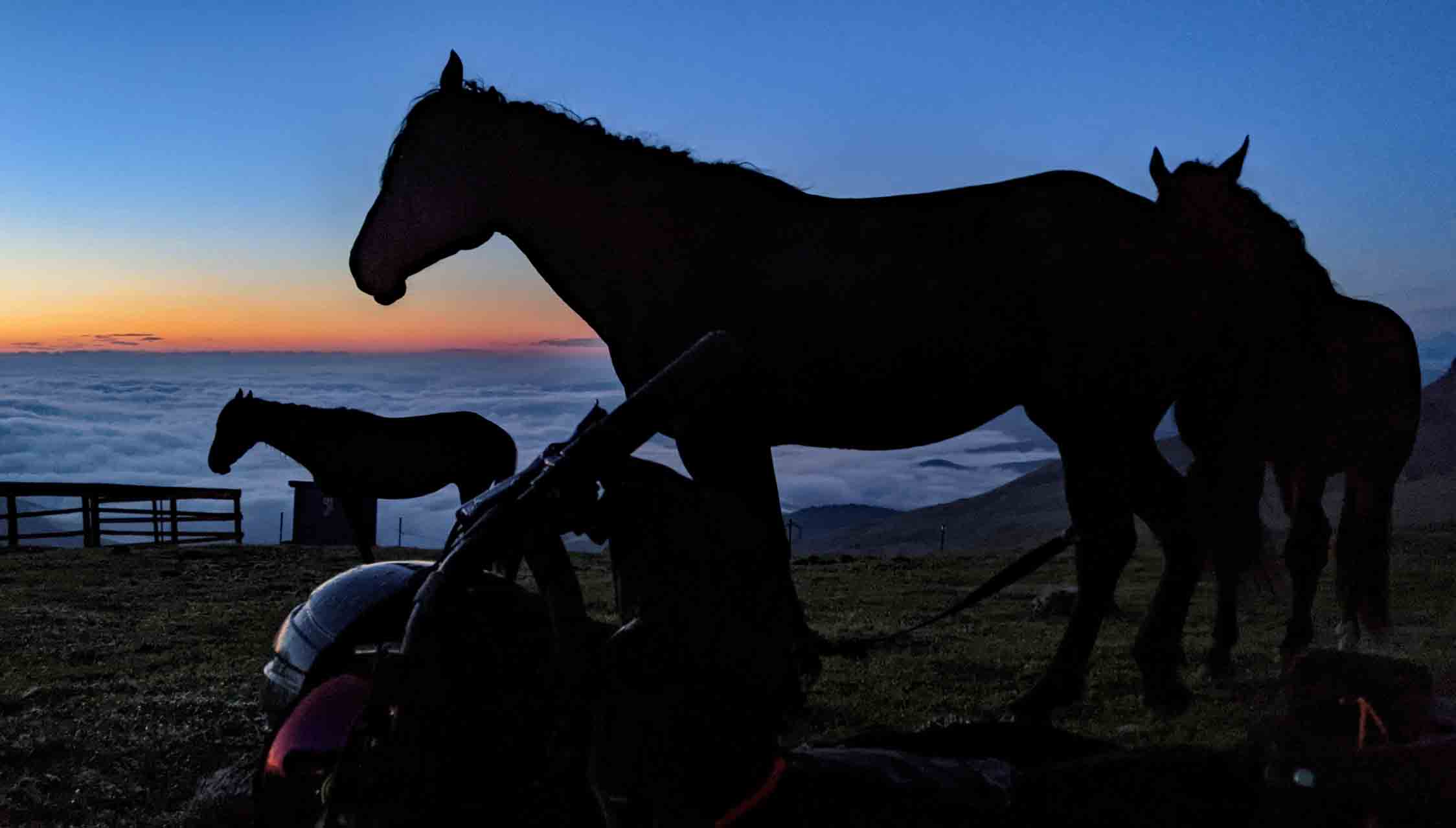
For me as a rookie it was a very hard day. I had a hard time falling asleep and started questioning myself if it was the right idea to start this trip. We set up a camp in a field full of horses. It had an amazing view, but all night we were kept awake from horse noises near the camp. Also, there were some people who were up all night, going to the bathroom by our tent and talking so loudly.
We woke up early so we could take a picture of the sunrise. Early in the morning Mt Elbrus was very beautiful and was clear of fog, so we got very lucky. The clouds in the valley bottom looked like it was a sea.
Day 2
For the first 30 kms of our route on Day 2, we were heading downhill, but it was a gravel road with big rocks, so it was very hard. Gradually though, the surface switched to asphalt, which was much easier for us to ride.
After that we had a 30 kms climb to ride up. Even though it was asphalt, we still were struggling because some of us were very fatigued and inexperienced in these conditions. Also, you needed constant concentration. With this climb finished, our day was still not done. We still had a lot of kilometers to go and the surface was changing. We needed to pass through a Sirh mountain and then our last destination for the day would be Emanuel field.
We had a lot of difficulties going downhill because this road was covered with sand and rocks, also many riders were tired by this point, so it became dangerous. Luckily for us we finished that day without injuries. We decided not to cross the river by Emanuel’s field because a bridge got washed away, so we stayed on the side where the track was better. It was lucky that we didn’t stay on the other side of the river because otherwise I have no idea how we could have come back.
Day 3
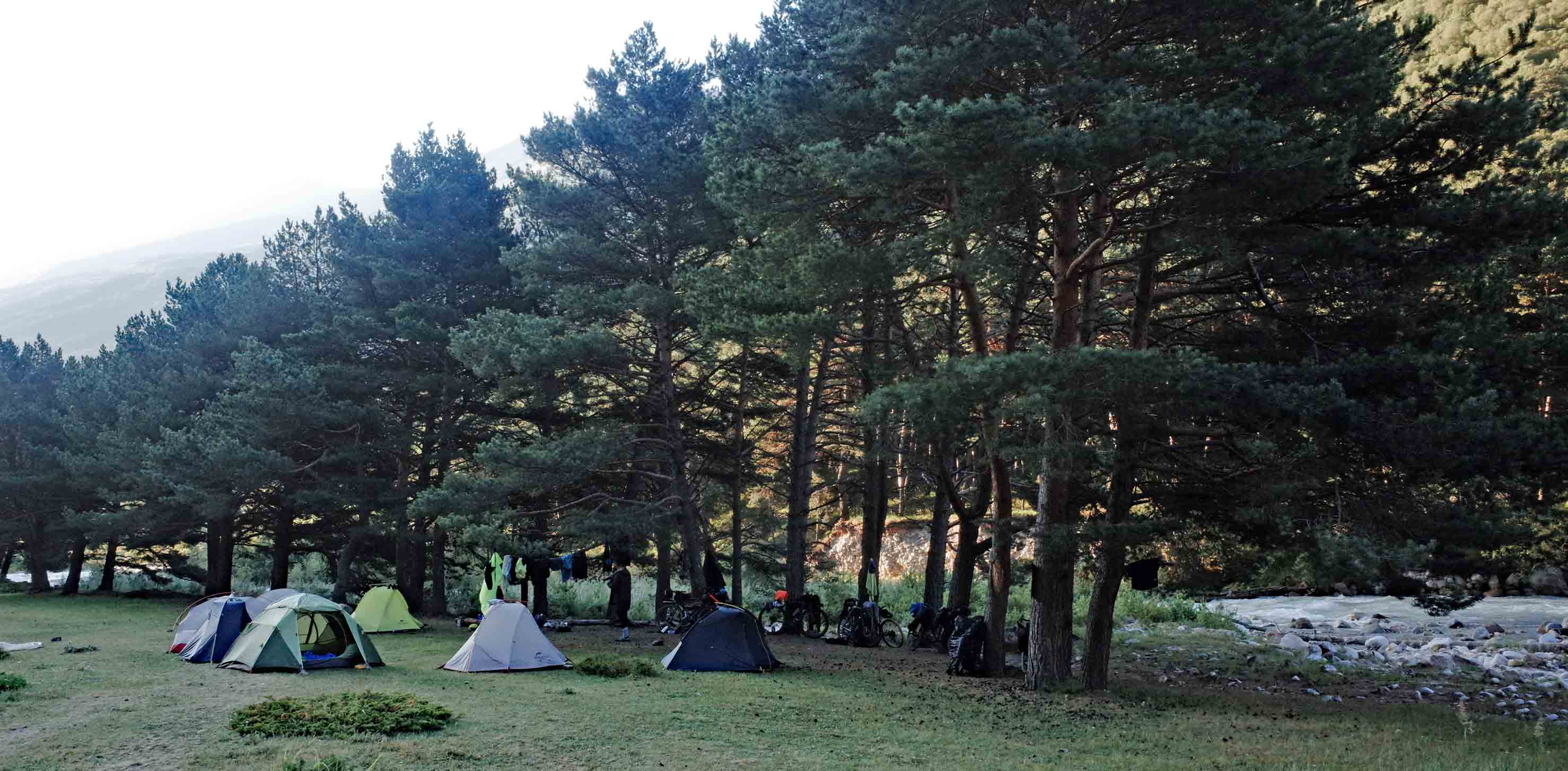
It was a chill day for us. We were mostly focused on eating tasty traditional food. We ate “Khichiny '' which is a traditional pie of Kabardino-Balkaria region filled with potatoes, cheese and vegetables. Half of us are vegan though, so we always needed to double check what was inside and make some changes. For vegans, they were taking out the cheese. For sure we felt some dishes were not vegan even though a lady told us that it was. The funniest part which happened to us at Emanuel’s field was meeting ground squirrels. One of us forgot to hide some food and they immediately stole it. Also, they pooped inside our tent and happily ran away.
Day 4 and 5
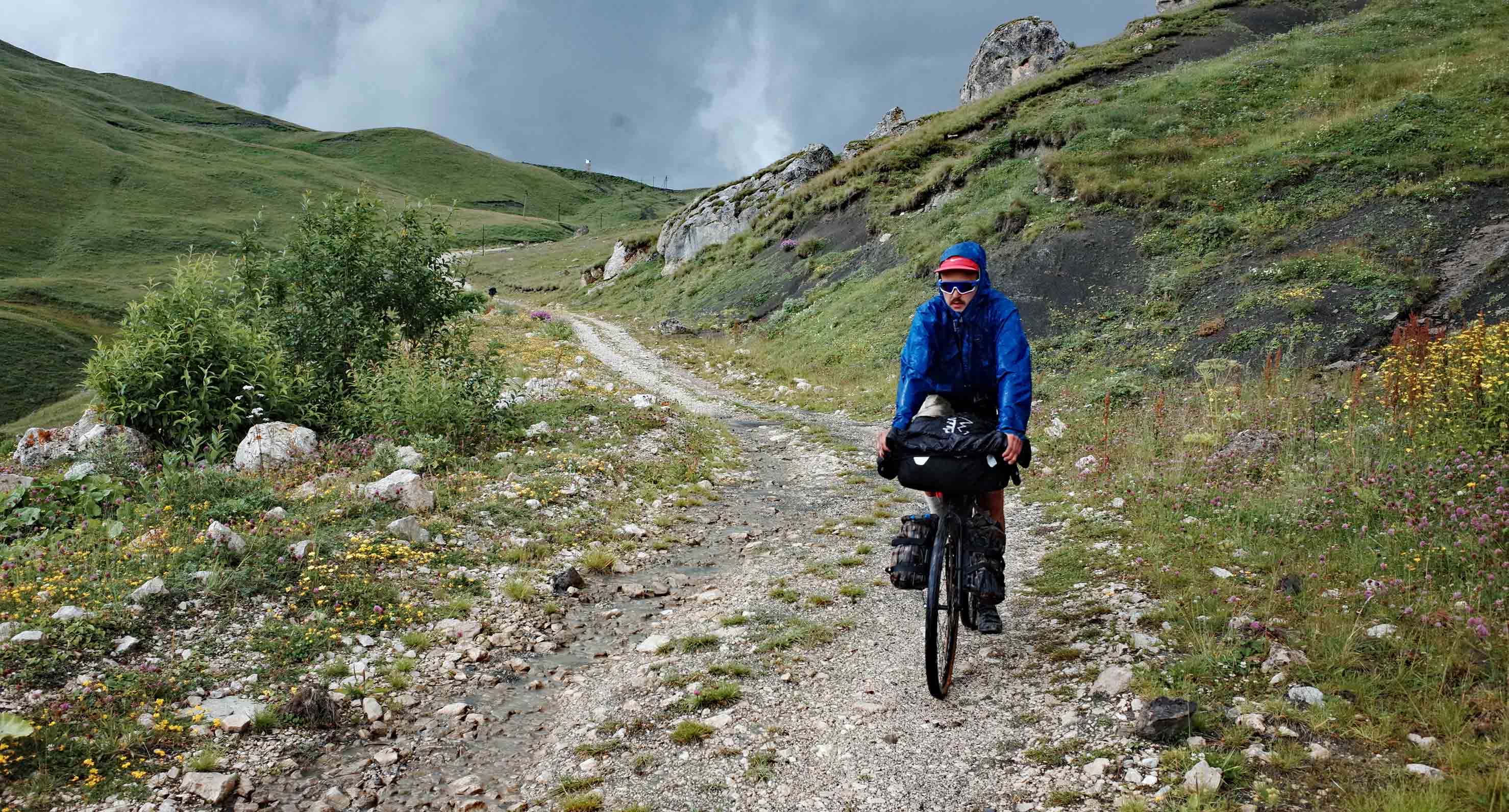
On the fourth and fifth day we planned to pass two mountains. Shaukol (2952m) and Jaurgen (2725m). It was not an easy route. Up and down, up and down on an awful track. On that day it was cold and rainy. At first, we planned to set up a camp but then we changed our plan and moved to a “guest house” because we had all got completely soaked. We got some rest there, took a shower. Actually, on this day we cycled more than planned. So, on the fifth day we had only to ride 50kms, but it was all uphill. Our final destination was in Azay (near Tersk city and the bottom of Mt Elbrus). At Tersk we saw a marathon running competition, there were a lot of athletes.
Day 6 and 7
On the 6th and 7th day we chilled and took some rest. We did some walking around. Also, we went to see the Terskol waterfall and went up to Elbrus by electric cable car. Mostly we were resting a lot before our next days.
Day 8 and 9
For the next two days our goal was to ride 110 kms. Firstly, we rode to the Gizhgit lake. It was very beautiful lake. The weather was so hot so we decided to swim in this lake. Then we heard a funny story from locals about that the lake’s “attributes” – we discovered it was a former reservoir intended for the disposal of waste from the Tyrnyauz tungsten-molybdenum plant. We got back on our bikes and headed for our next step for this day – a mountain pass Aktoprak. On the way we met local people and they gave us tasty apricots and wished us good luck. At the end of the day we set up camp and surprisingly for us we were surrounded by a wild marijuana field.
The next day we rode to the sky park. One of us wanted to fly, but the weather changed and it started to rain, so flying was not allowed. The rest of the day we spent by the Chegem river at the green border zone.
Day 10
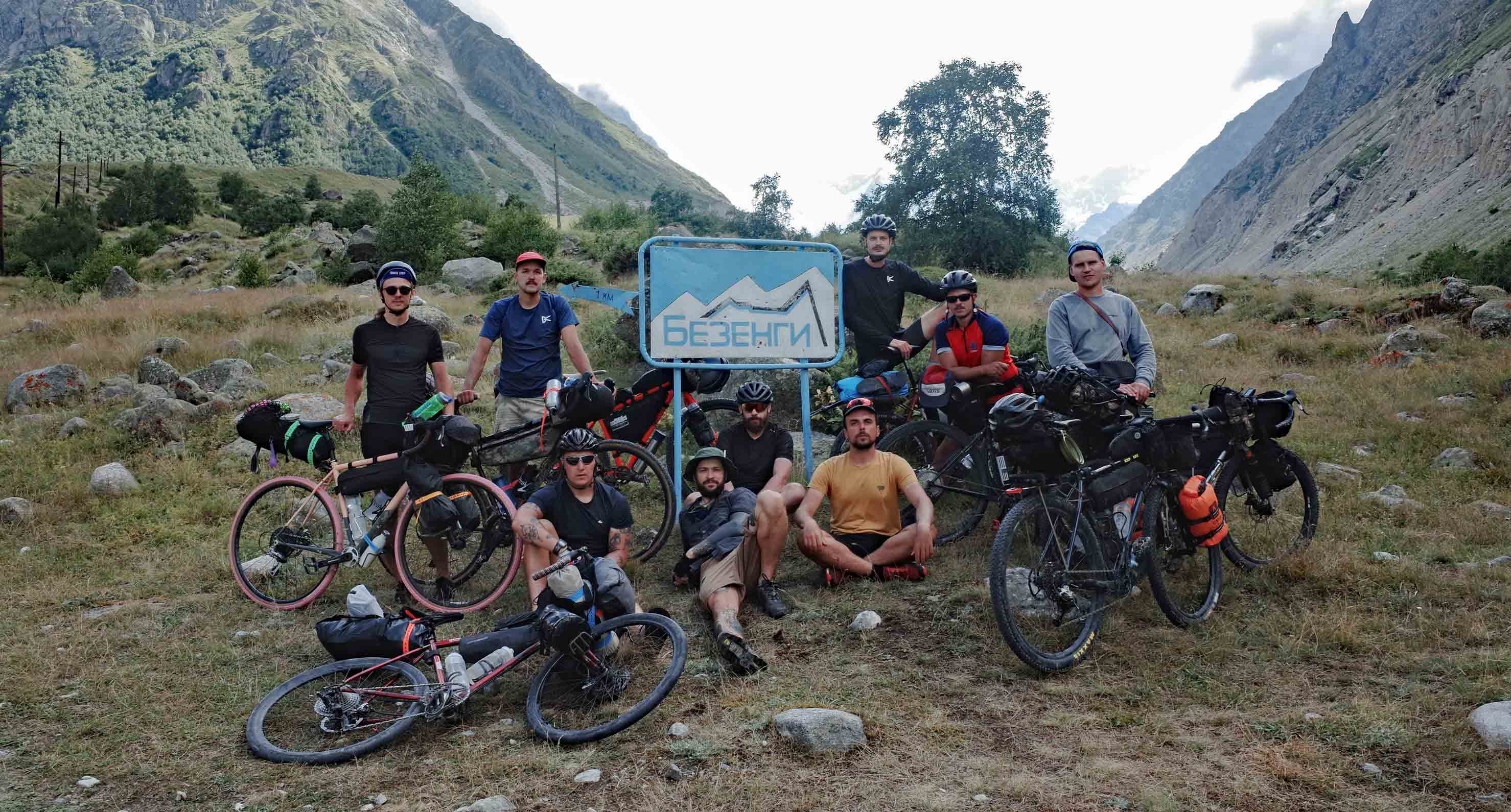
We visited some beautiful locations. Our goal was to ride 70 kilometers and 3300m uphill. At some point we took a break and then took the track towards Dumala mountain at 2554m.We had some problems with brakes, because the downhills with gravel/stone road had “eaten” our pads. The next part of the route started with a view to the Bezengi Wall, which comprises six of the eight Caucasian 5000m mountains. It’s part of Great Silk Road. Our last point of the day was in in alpine camp in Bezengi. When we entered the camp, many people gave us respect and they were very surprised that we could ride for so long in these conditions. The atmosphere in the camp was very friendly. The camp was very typical, just like other camps with bunkbeds, separate food places and showers. So we decided to stay in the bunk rooms for the next 2 days because we were exhausted.
Day 11
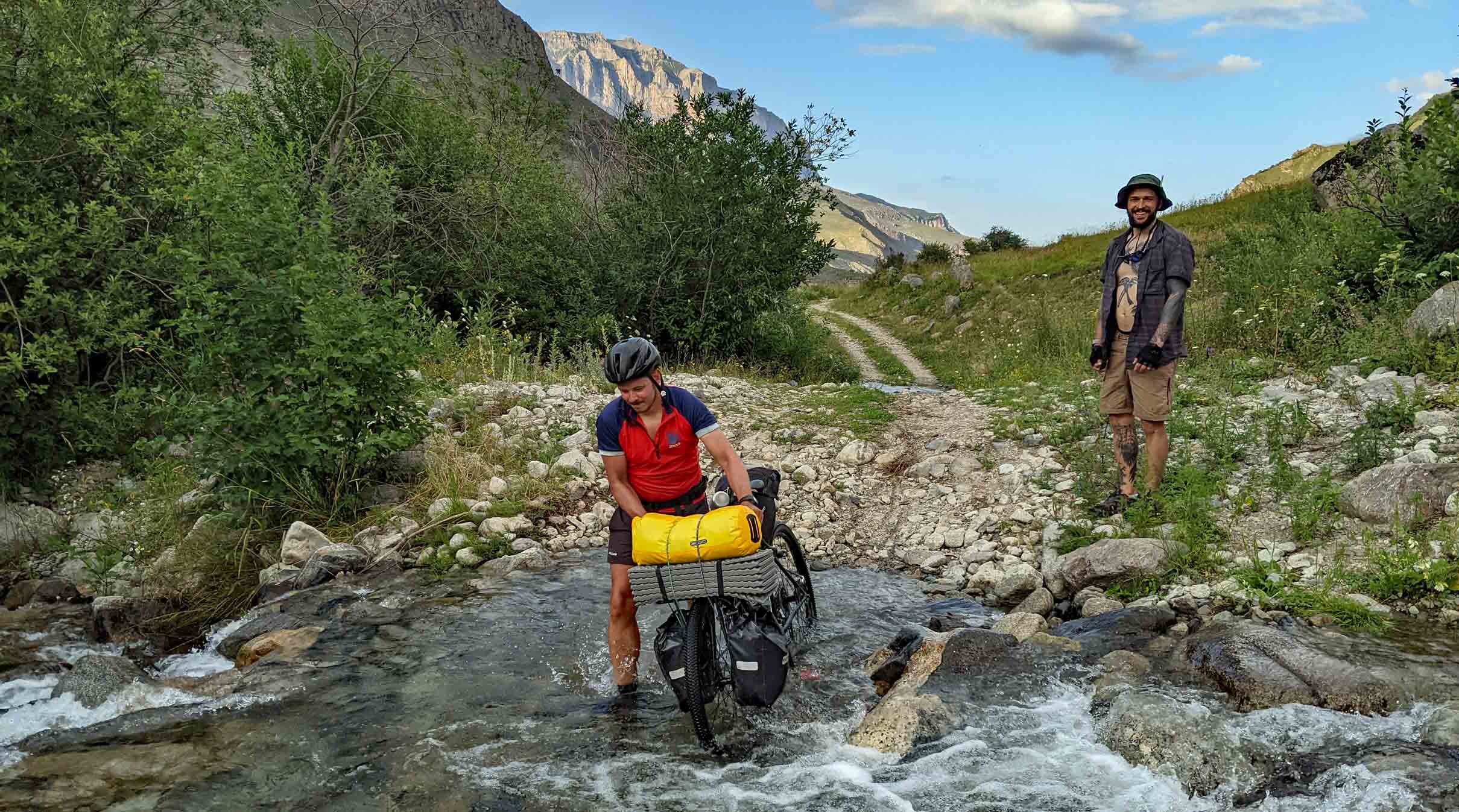
On the next day we went to Baran Kosh lake. It's a lake near Bezengi wall, where you can spot West Caucasian tur – a wild mountain goat with large horns. It's a yellow border zone, so entry was only possible with a permit from the FSB (it’s a Russian version of FBI). The route to this lake traverses over glaciers. It was not an easy route, because there was no trail. When we reached Baran Kosh lake, our guide informed us that the mountain goats had been seen by the lake yesterday and were unlikely to return today. This was not great information for us, but we couldn’t do anything about it. On our way back it was raining so it made it even tougher for us. We left the route, which we shouldn’t have done and a stupid thing happened - we got separated into two groups. The second group was a little bit lost and we waited for them for approximately two hours by the border zone. Everyone got nervous - we thought something serious happened. When finally the second group found their way they told us they got lost and on the map it was hard to find the route back as it was just plain snow and ice. We thought it’s going to be an easy day, but not today.
Day 12

On the 12th day some riders went for a walk around and half of us stayed at the camp fixing our bikes, mostly our brakes. So, on this day we actually didn’t cycle that far. We only left a border zone and then we set our camp near the pass of Shkolniy.
Day 13
On day 13 we rode through the highest vehicle-accessible mountain pass in Chegetshzara (Shkolniy) which was at 3125m. Physically it was the easiest day for us not only because of a small amount of kilometers, but mostly because our muscles had finally got used to everything. Also, we started to recognize where you can ride and where you shouldn't ride. This road was made only for vehicles like UAZ or special jeeps. We didn’t meet anyone on this pass, but at one spot we saw a couple people who were trying to do maintenance work on the road. They gave us some water and told us that we are very cool. At the highest point of this pass we saw a very beautiful view of the Kaukaz mountains. This road ended near our last campsite.
Day 14
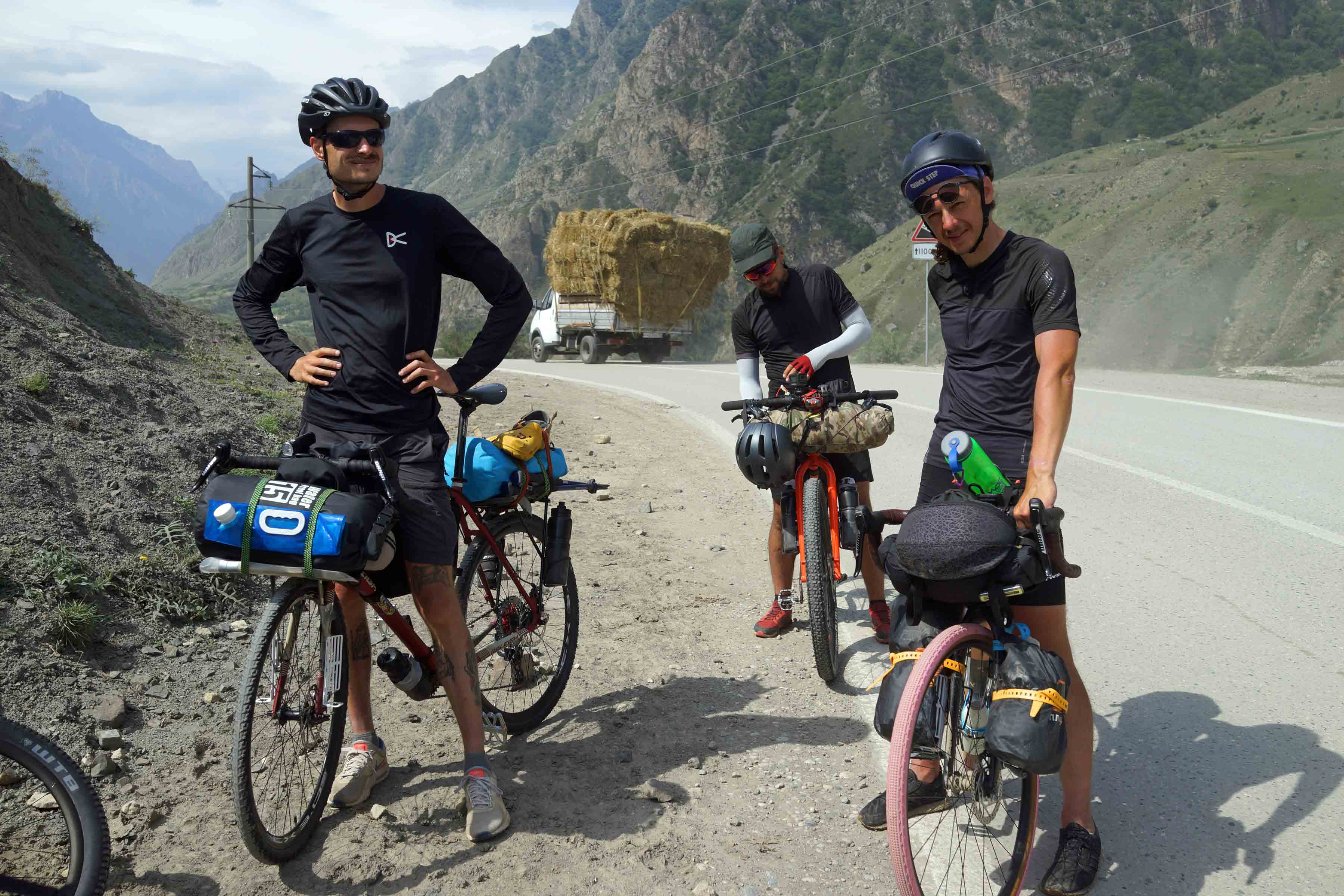
On our last day we rode mainly on a good asphalt road to our last point in Nalchik, where we could chill inside hot springs and wait for the transport that would bring us to our train to Moscow. We thought we had ordered two big vans so that we didn't need to disassemble our bikes, but it turns out we only could use one van for bikes because the other van had leather seats and the driver was worried that we would scrape their seats and damage them.
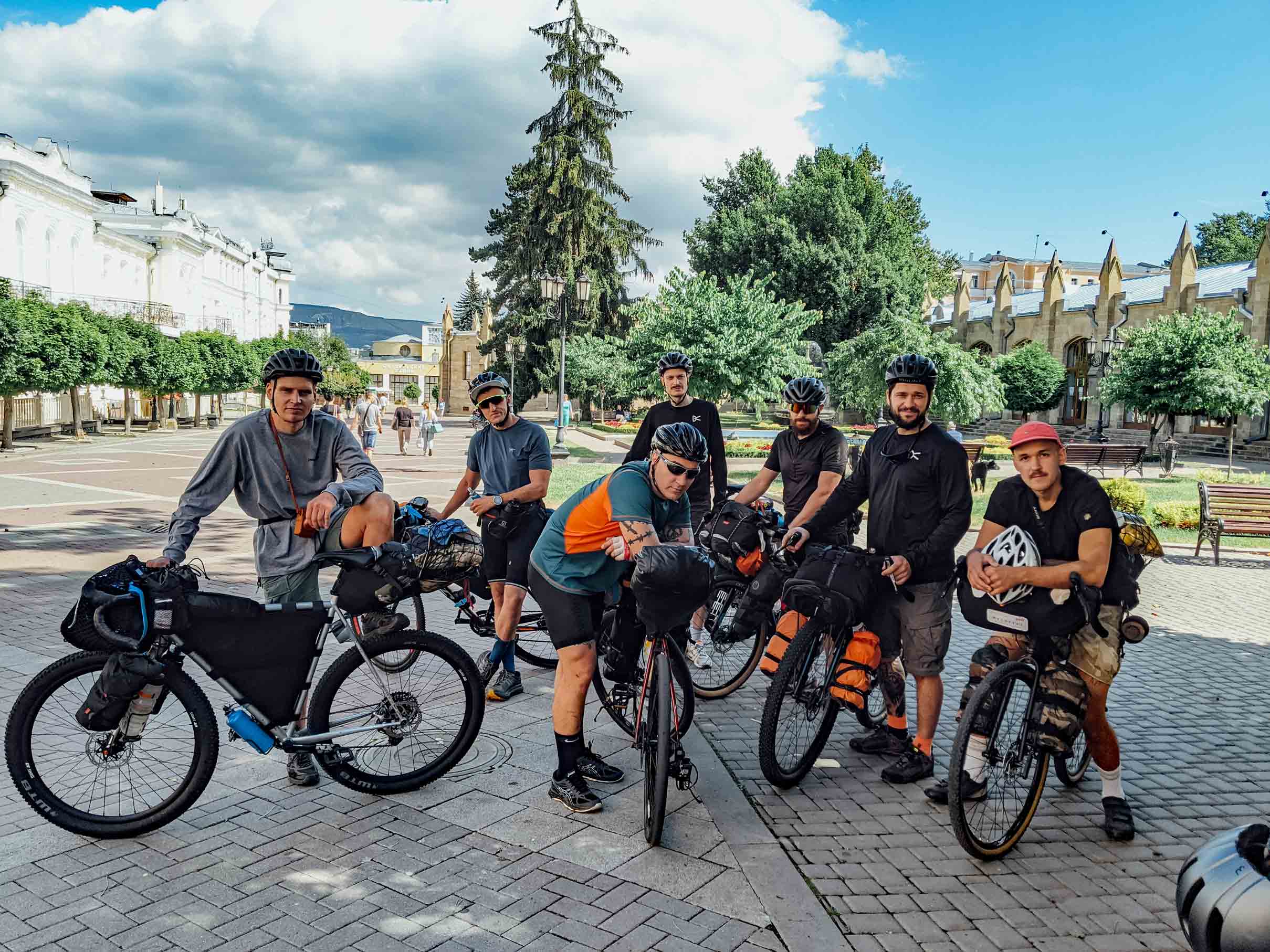
Finally, we arrived at our station, got some food and double checked how to catch our train because it was tricky. Since it wasn’t a main station, when a train stops you have only a few minutes to jump in, so we needed to act fast and know which train was ours. And of course, there was a problem again on the train. We had purchased special storage for our bikes, but it turns out the space was filled with some boxes belonging to the train crew. So, some of our bikes had to travel with us in the passenger compartment. If you can imagine a Russian train, then you will understand that it was so uncomfortable to have to transport our bikes in this way because everything is so tiny. Unfortunately, it happens only in Russia when you actually try to purchase something extra and you never receive what you pay for.
Some interesting facts about us and our trip
· 50% of the group were vegans
· Only one person had previous experience of long expeditions by bike
· We’re all friends
· One person only started riding a bike this summer
· The cycling trip itself was about 2 weeks.
· We all took different levels of gravel bikes.
· The route was mostly gravel with some small sections of asphalt.
· We spent the nights in a mixture of tents, houses and some days at the alpine camp in Bezengi.